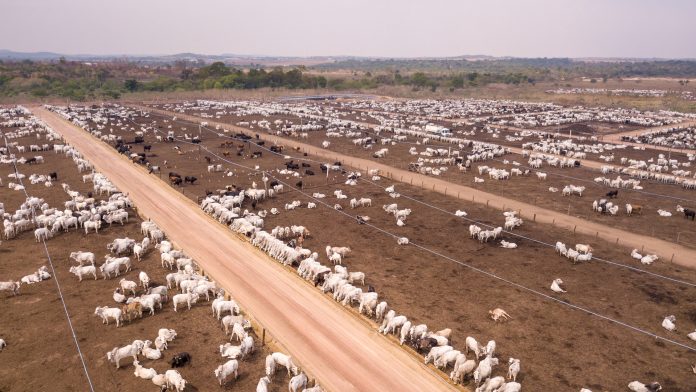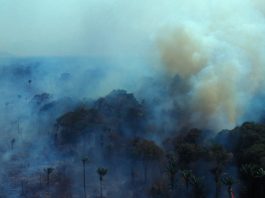Researchers investigating the effects of deforestation in the Amazon report that large-scale commercial farms in the region result in higher temperature increases and less rainfall than small-scale farms.
Deforestation in the Amazon has converted lush, biodiverse rainforest into farmland. The uses of the deforested land are diverse, and activities can range from small-scale farming in rural settlements to large-scale commodity agriculture. Commercial farms in the Southern Amazon can reach hundreds of thousands of hectares in area, exporting millions of tonnes in grains and beef every year.
Eduardo Maeda from the University of Helsinki and colleagues used satellite data to compare areas dominated by different land uses and farm sizes to evaluate their impacts on the regional climate. Although small rural settlements experienced no clear changes in rainfall during recent decades, areas dominated by commodity farms have become significantly drier.
Areas of commodity farming also experienced a much higher increase in temperature, in comparison with small-scale rural settlements, largely due to intense management of commercial crops leading to reduced vegetation cover throughout the year and decreased plant transpiration. According to the authors, mitigating climate change in the Amazon basin will require alternatives to current commodity farming practices.
How do tropical forests control rainfall and heat?
Tropical forests act as a water pump, getting water from the land surface, which evaporates back into the atmosphere and return to the land in the form of rain. Because this process requires energy, it also causes a reduction in the surface temperature.
The trees are a critical component of a complex water cycle, which guarantee that the forest is kept moist. When the forest is removed, the water returning to the atmosphere is reduced, and the unused energy contributes to increased local temperatures.
The research by Maeda and colleagues demonstrate that this process is further aggravated by large commodity farms. The production of commodity crops in the Amazon forest is often associated with a very intensive management of the land. Farmers often have two harvesting/seeding seasons per year, which completely removes vegetation from the land surface, leading to a warmer and drier local climate.
Although areas dominated by small rural settlements also experience temperature increase, the magnitude of the changes are substantially smaller than those observed in big commodity farms. The authors of the study argue that the main reason is because these small rural settlements are often less managed, leaving a denser and more continuous vegetation cover than in the large monoculture farms.









